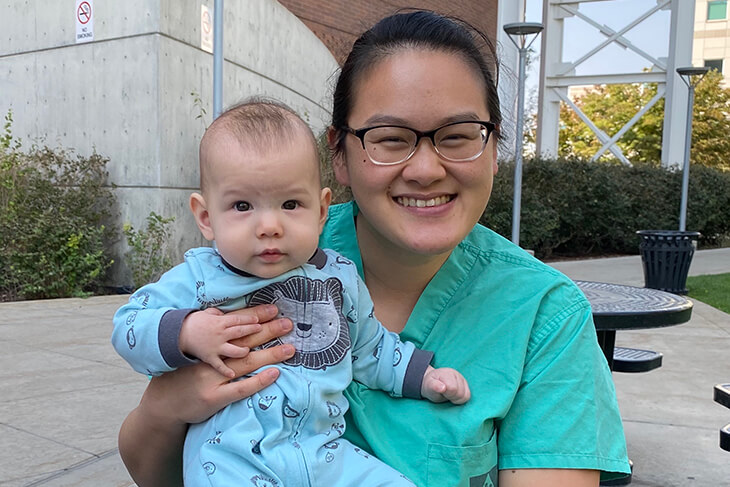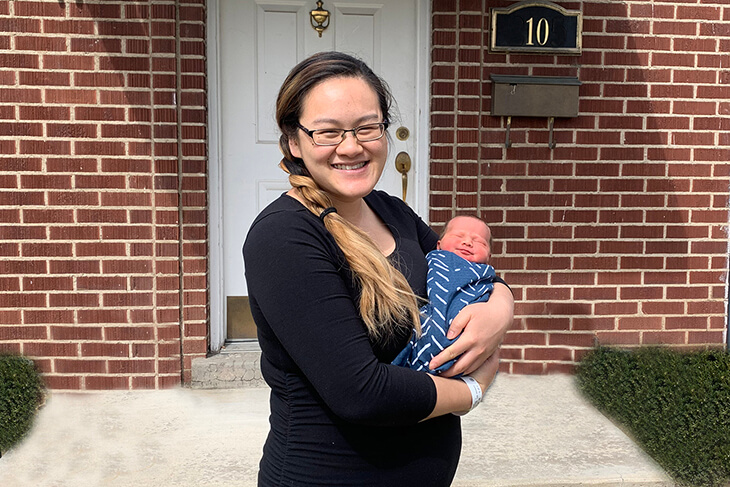What is in my baby’s diaper…?
When babies are born, we spend a lot of time loving their beautiful faces, but a lot of their care seems to be for their bottoms! A newborn baby typically has 8 to 12 diaper changes in a day—while a person might know a lot about what happens down there, as a parent of a newborn, you may be surprised by what you find. Hearing about it early may help calm some of those middle-of-the-night panic moments. Here are some common findings, questions, and even surprises that may come up during your baby’s diaper change.
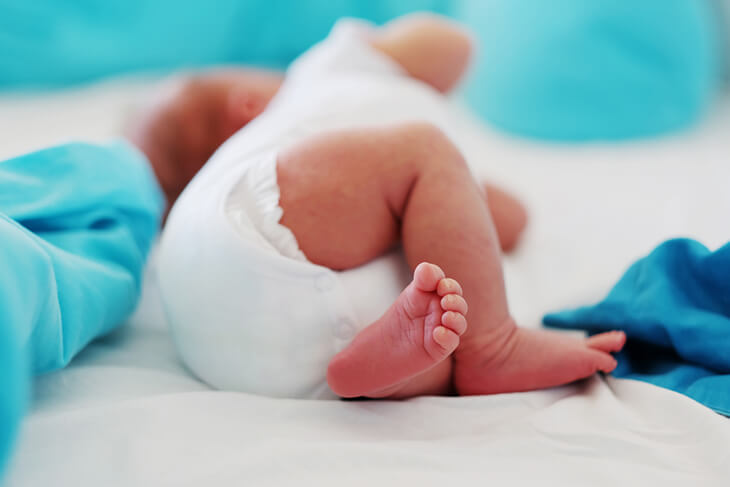
Urinating
How often should your baby pee? Your baby should work up to at least 5 to 6 wet diapers per day. A good rule of thumb is Days of Life = Number of Diapers. So 1st day of life, have 1 wet diaper; 2nd day of life, 2 wet diapers; and so on until he reaches 5-6 wet diapers per day from then on. Decreased wet diapers may be the first sign of dehydration, so if you see that your baby isn’t peeing as much as usual, consider shortening those feeding intervals and feeding her more often. If it is a big or persistent drop, she isn’t acting well, or you have other concerns, seek medical attention right away.
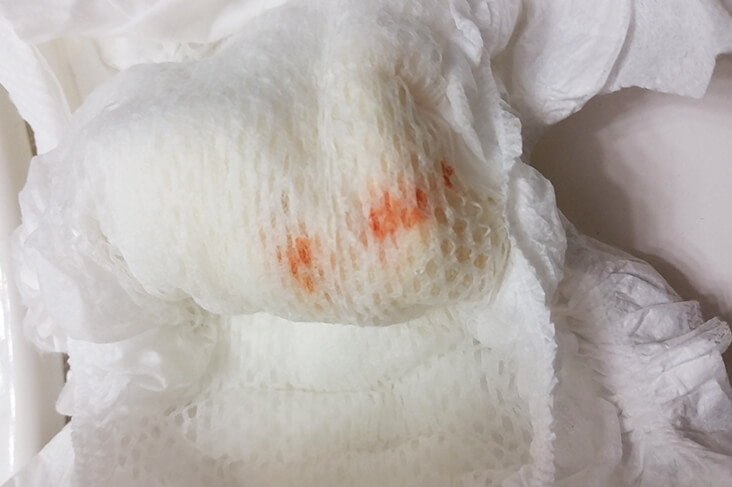
Sometimes, in a baby’s urine, you’ll see an orange tinge or even a little pile of orange dust! This is caused by urate crystals. Urate crystals occur because newborn urine is more concentrated in the first few days of life. If you see these, it will likely be in the first week of life. Sometimes, this is referred to as “brick dust” because it often sits on top of the diaper.
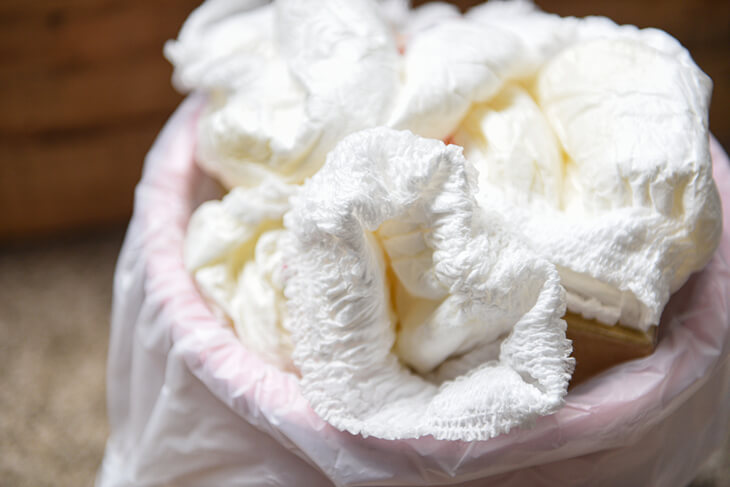
Poop
Ahh, poop. I never thought poop would be so important in my medical or parenting career, but the newborn phase is the new parent’s inauguration into the poop obsession club.
Your newborn’s poop will start out as sticky, black/dark green meconium, which will go away by his 4th day of life. After that, diaper changes will be less sticky and tricky. His poop may then be various shades of green, yellow, or brown. Talk to your pediatrician if your baby’s meconium has not transitioned by the 4th or 5th day of life.
Unlike wet diapers, we worry less about how many dirty diapers each baby has. He may poop with every feeding or just every few days. Pooping might even take a bit of effort, accompanied by a red face and a little cry. (It is hard to bear down and relax at the same time!) But if your little one is otherwise happy and gaining weight appropriately, we will be happy too.
So when will your pediatrician REALLY worry about poop? If it is red or black like new blood or old blood, or chalky white, which means it could be missing bile. If there are tiny drops of blood in your baby’s poop, schedule an appointment with your pediatrician. But if you see lots of blood or white-colored stool in your baby’s diaper, he should be seen by a medical professional immediately.
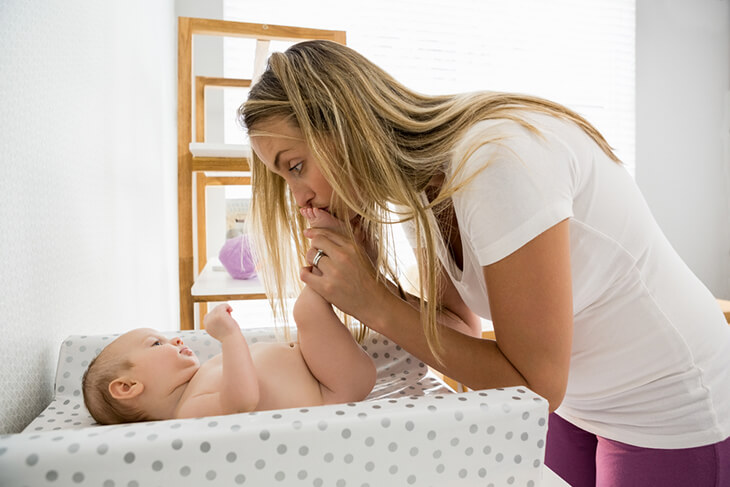
Is that blood down there??
Occasionally, a parent is put in shock from seeing blood in the front of the diaper. Where does this come from?
In baby girls, blood may come from the vagina. Your little girl is born with functioning reproductive organs, so as her mother’s hormones decrease in her body outside of the womb, it may stimulate a “mini period” in her. It can also cause a little bit of clear, white, or yellow vaginal discharge that has a mucus consistency. But no need to worry if either of these things does not occur—though it can happen, it will not necessarily happen in all baby girls.
A baby boy may have small amounts of blood in his diaper after a circumcision. Otherwise, he should not bleed. Normal bleeding from a circumcision site is spotting, less than the size of a quarter. If you see continued dripping or oozing when you are home, try applying pressure for at least 30 seconds. If it does not stop, he should be seen right away by a doctor. Not sure if it’s blood, or is your baby uncircumcised? Consider the possibility of urate crystals. If you think it could be blood, call your doctor right away.

While the rest of us have a #1 and #2, maybe babies should have a #3, #4, or more! Now that we have reviewed what some of those things are, you can be assured when your baby makes the normal transition from being inside the womb to outside. If you have other questions, consider taking a photo of the diaper to share at your appointment when you come to see your pediatrician at Canyon View Pediatrics. Happy diaper changing!

And remember, if your baby is acting ill, excessively sleepy or fussy, has a temperature of 100.4 F or higher, or if you have any other immediate concerns, you should always take your baby in to be seen right away.
